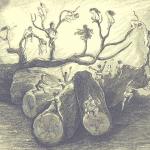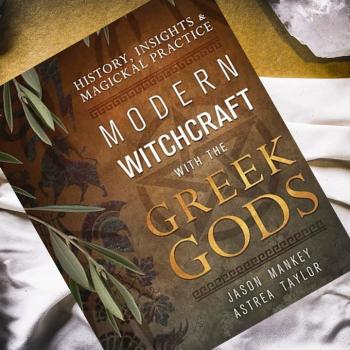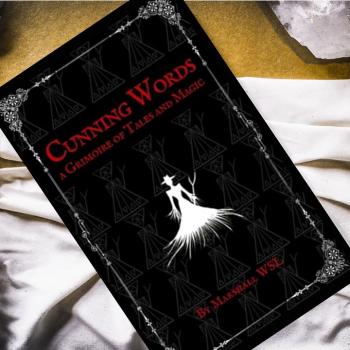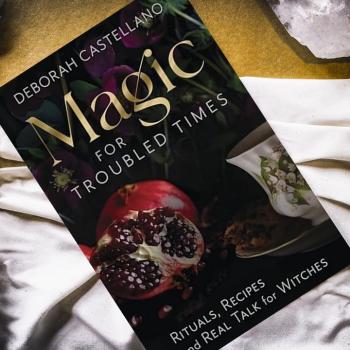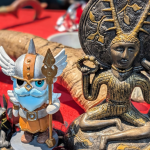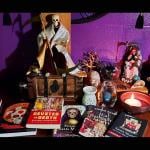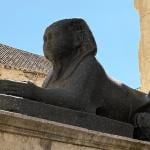As we celebrate the shortest day and longest night of the year, we celebrate the Goddess of Winter and the eventual rebirth of the Sun. Winter Solstice festivities were observed in several pre-Christian European cultures, called by names such as Yule and Saturnalia, and was often a time for feasting and drinking, as well as gift giving. During the Winter Solstice in Norse tradition, Odin, riding his eight-legged horse Sleipnir, leads the Wild Hunt so that the spirits may parade about and visit their loved ones. Imagery often depicts Odin in blue, silver, and white robes with a long white beard, comparable to early depictions of Santa Claus.

As many know, the story of Baldr (son of Odin and Frigg) and his tragic death is why for years we have kept the custom of kissing under mistletoe during the winter months. Frigg loved her child so much that she took an oath from all the gods and everything in all the realms that they would never hurt Baldr; however, in her hast, Frigg overlooked mistletoe, a seemingly harmless plant. As Frigg had the gods hurl things at Baldr to test the oaths, Loki noticed that mistletoe had been overlooked. He gathered a sprig and fashioned it into a small dart and then gave it to Baldr’s blind brother Hodr. Loki guided Hodr’s hand to throw the dart at Baldr quickly striking him dead. Distraught by her son’s death, Frigg vowed that no one would ever be hurt by mistletoe again, and that from then on all those who passed by mistletoe would be granted a kiss.
Bringing an evergreen tree into the home and decorating it is another custom that has survived through the years and was even adopted by Christians when they moved into Pagan land, despite the fact that their Bible bans the use of them. The tree was a symbol of everlasting life, and Pagans would bring a tree into the home or into a temple and decorate it to honor the God of nature and remember that while winter had frozen the Earth, the Sun would return and life would spring from the soil once again. Similarly, evergreen boughs, wreaths, holly, and ivy were all brought into the home to decorate for the Solstice and to honor the Gods. One of my personal favorite tree decorations is a little spider ornament which is a tradition based off the Eastern European legend of the Christmas Spider (it is a very cute story, please look it up and read).
Baking sweets is my favorite way to get into the holiday spirit. One delicious treat my mother and I always make for the holidays is chocolate mice, which sound a bit weirder than they are! It uses cherries with the stems still on them, Hershey kisses, dark melting chocolate, almond slices, pink frosting, and Oreo cookies. We open up the Oreo cookies, dip the cherries into the melting chocolate, set them on an Oreo with the stems pointing out the back to make the tail, press a Hershey kiss onto each cherry to shape the head of the ‘mouse’, then put two almond slices between the Hershey kiss and the chocolate cherry to make the ears. After this we use pink frosting to make the nose and eyes of the mice. If you wish you can also use green icing on the Oreos to make it look like the mice are sitting in grass. They are absolutely delicious and make a lovely display food if you want to lay out a dessert spread for a holiday dinner.
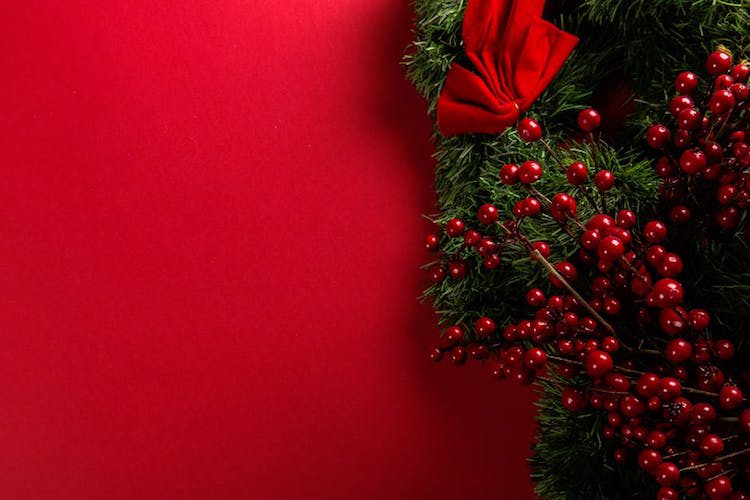
via Pexels. Public Domain Image.
Winter holiday customs have deep Pagan roots, yet the holidays can be a very dividing time for families, especially for Pagan individuals in a predominantly Christian family. If you are the only Pagan in your family it can be more difficult to observe the holidays in the manner you wish, particularly if you are underage and still living at home. Getting through the winter holidays can be an ordeal, as you are expected to celebrate the Christian messiah Jesus’s birth on Christmas with your family, but no one is willing to celebrate the Solstice and the Sun’s rebirth with you.
Being the sole Pagan in your family and/or community during the holidays can put stress on your faith, it can be very isolating to see everyone around you partaking in a celebration which you do not. Driving around and all the homes have nativity scenes, there are signs saying “Put Christ back in Christmas”, and people with good intentions keep taking it upon themselves to ensure that you know that “Jesus is the Reason for the Season”, can make it seem like you are alone in your beliefs, but it is important to stay strong in your faith and not to let others make you feel unimportant because you are a minority.
Incorporating Solstice and Christmas traditions together is a good way to feel more included, adding a few subtle Pagan decorations to the tree, adding a pentagram to a door wreath or on the treetop, mistletoe over a doorway, even carving symbols into a log to burn in the fireplace through the night of the Solstice is a great and easy way to celebrate the Solstice without drawing too much attention to yourself if you cannot be open about your faith around family. I am lucky enough because neither my grandmother or mother are big fans of putting up the tree themselves and decorating it anymore as they have gotten elderly, which gives me free range to decorate it how I see fit, and I tend to go overboard with the icicles.
Take the time of the Solstice to reflect on personal changes to be made in the upcoming year and enjoy the winter season, if you live in the Southeastern United States like me our winters do not last very long so I like to enjoy it while I can. If anyone tries to tell you that your holiday is wrong or that you should be celebrating Christmas instead, just look them in the eyes and say, “Merry Solstice, may the Yule God and Winter Goddess bless you”, as a way to stand up for what you believe while still spreading holiday cheer!
Have a Merry Solstice! Blessed Be!



